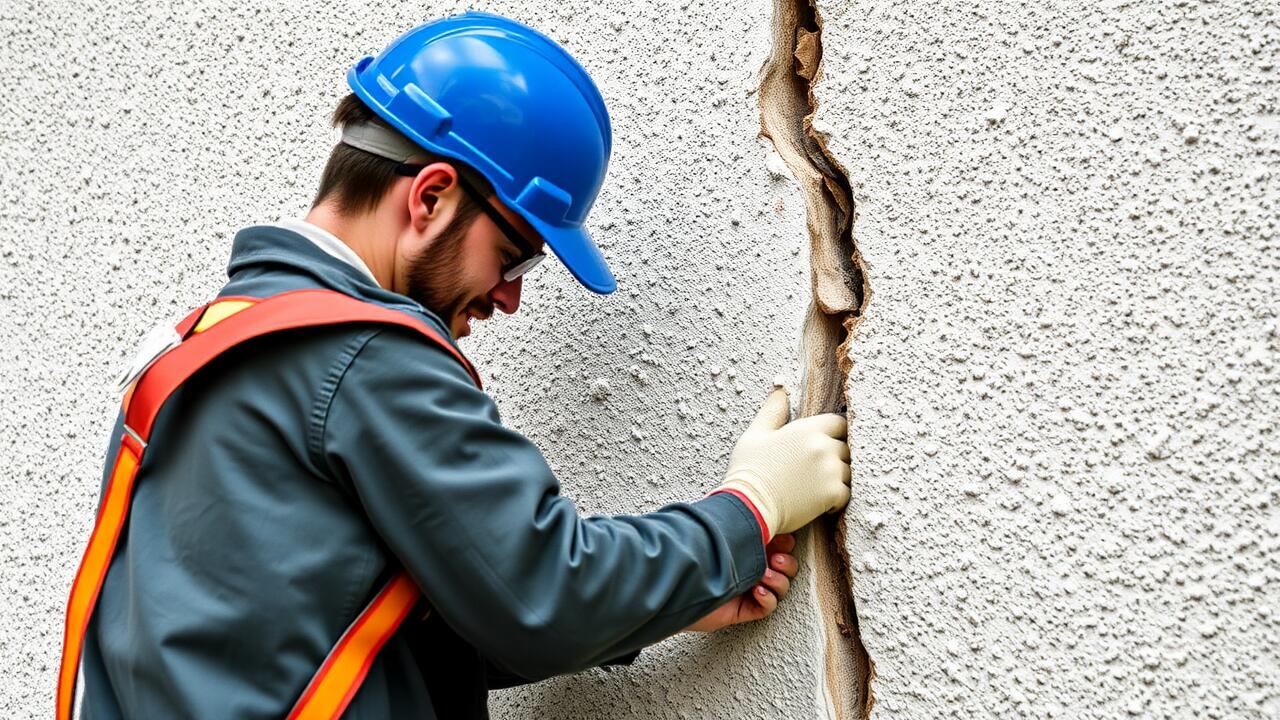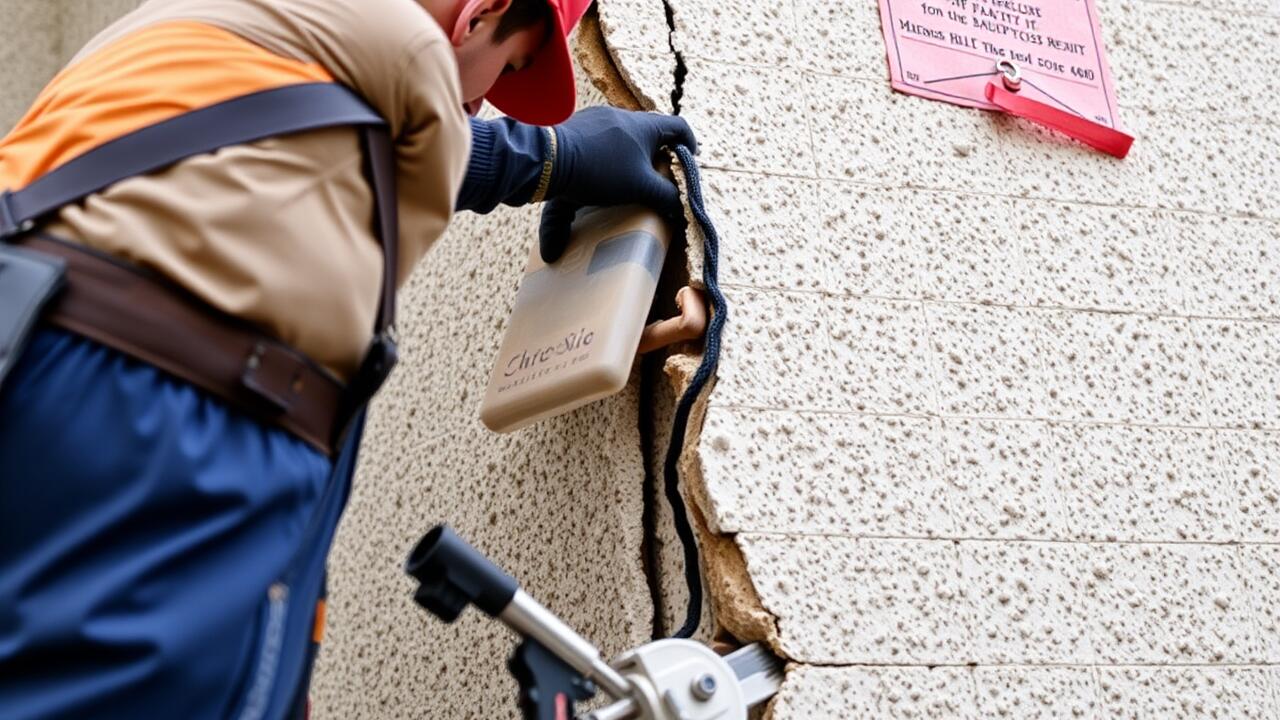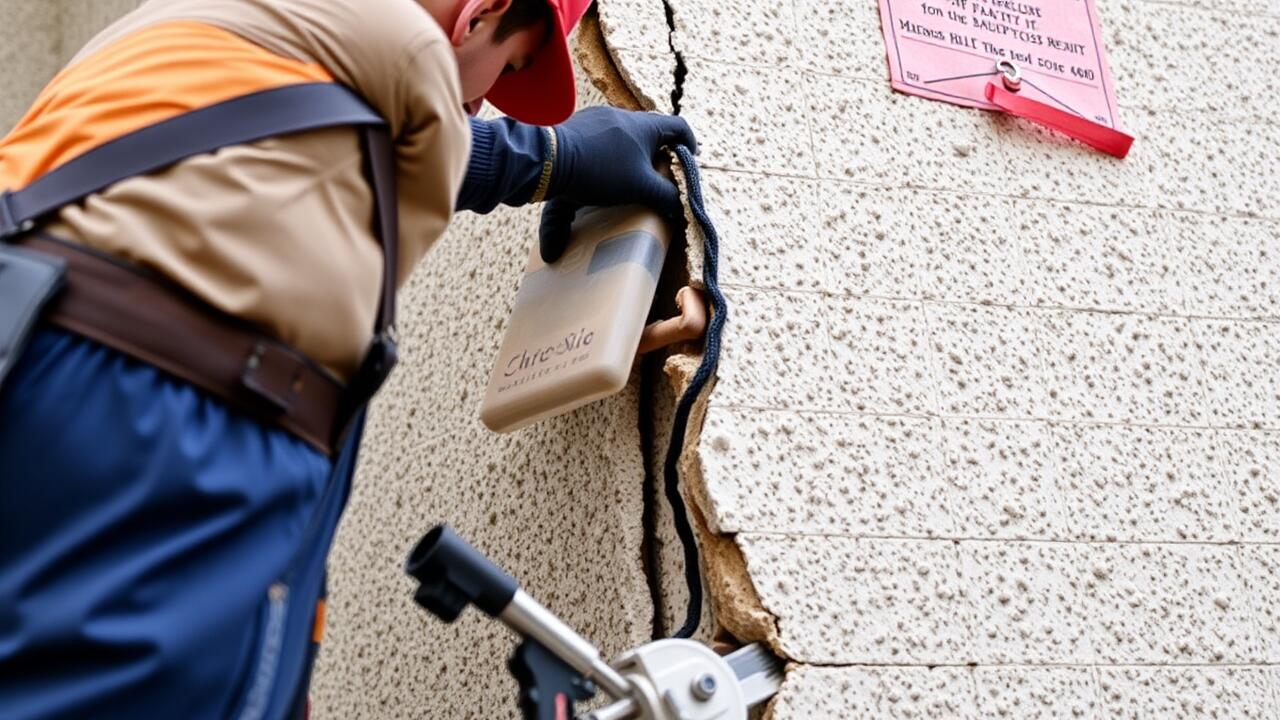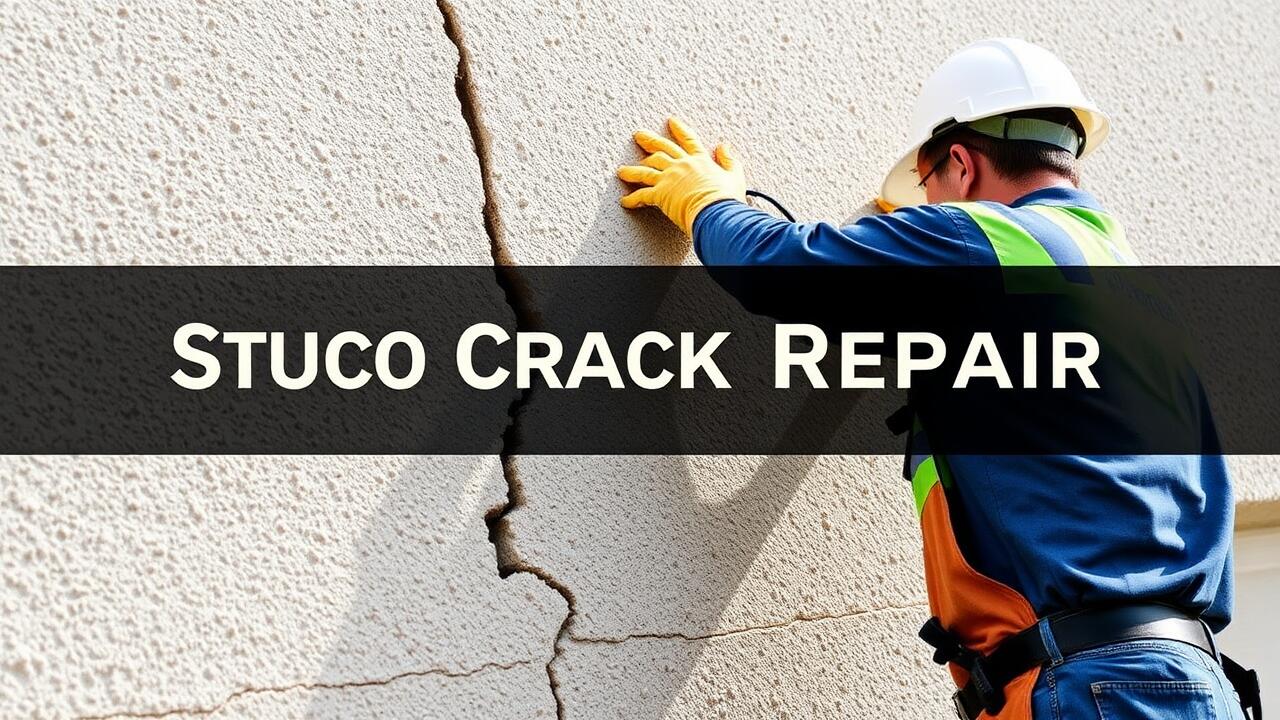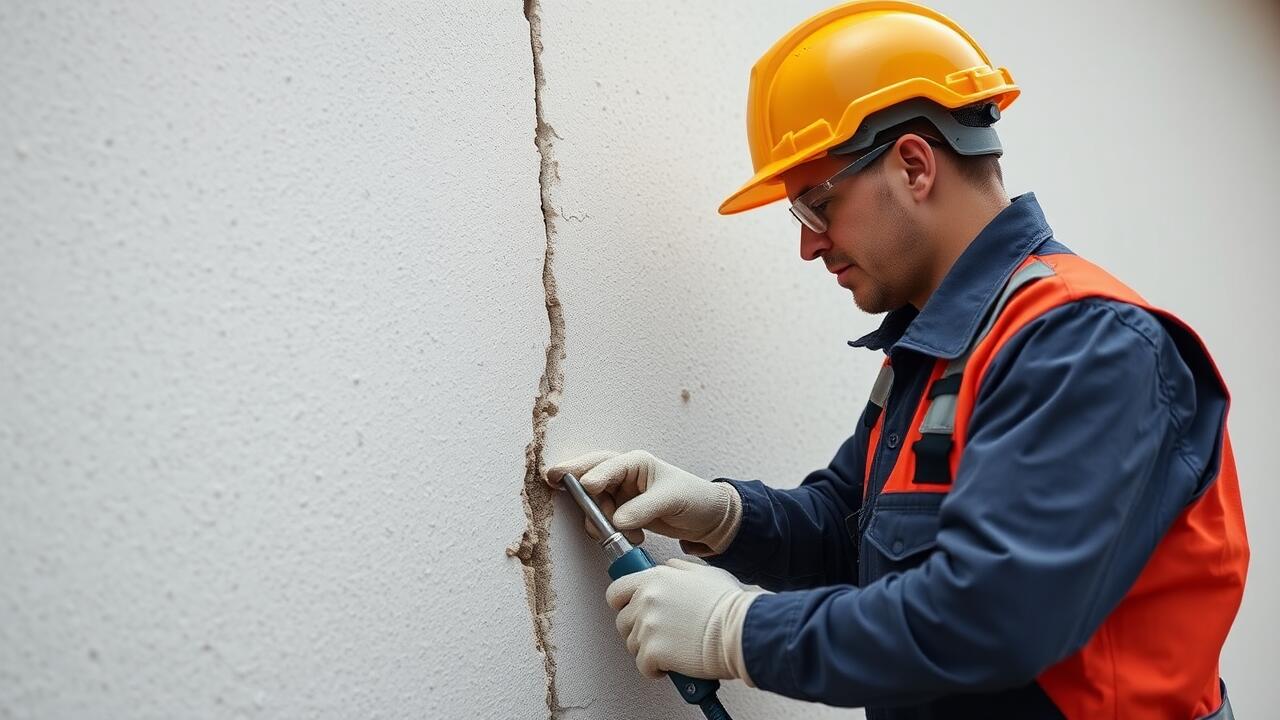
Addressing Larger Cracks
Larger cracks in stucco exteriors can lead to more significant issues if not addressed promptly. When you identify a crack wider than a quarter inch, it may require a more robust method of repair to ensure long-term stability. Start by cleaning the area around the crack thoroughly to remove any debris and loose stucco. This preparation step is crucial as it helps the repair material adhere better to the existing surface. For extensive damage, consider reinforcing the crack with fiberglass mesh, which helps distribute stress and prevent further separation.
In Crenshaw, Los Angeles, stucco crack repair services often involve filling the crack with a high-quality patching compound designed for stucco. Once applied, smooth the surface using a trowel for a seamless appearance. Allow the patch to cure adequately before proceeding to the final steps of finishing and painting. Taking these steps will produce a repair that not only looks good but also helps protect your home against moisture and pests.
Using Mesh and Stucco For Bigger Issues
For larger cracks in stucco, applying a mesh tape provides essential reinforcement. This mesh can be adhered directly over the crack, creating a solid foundation for patching material. The tape helps prevent future cracking by distributing stress and movement across a broader area. It is crucial to press the mesh firmly into the stucco for optimal adhesion and durability. Once secured, a layer of stucco can be applied over the mesh to complete the repair.
After applying the mesh and stucco, proper curing is important to ensure longevity. As the recently patched area dries, it is essential to maintain adequate moisture levels to avoid issues like shrinkage or cracking again. Following this initial repair process, professionals often recommend additional inspections to address any underlying structural problems. Engaging services like Los Feliz, Los Angeles Stucco Crack Repair can provide comprehensive support for maintaining the integrity of your stucco surfaces.
Finishing Touches
Once the repair has been completed, finishing touches can significantly enhance the appearance of the stucco surface. Texturing the repaired area helps it blend seamlessly with the surrounding wall. Various techniques can be employed, such as using a brush or sponge to replicate the original texture. Experimenting with different methods may yield the best results, ensuring the repaired section looks natural.
After achieving the desired texture, it is time to apply paint to the area. Choosing paint that matches the existing color is crucial for maintaining consistency across the surface. Many homeowners opt for a high-quality exterior paint to protect against weathering and fading. For residents in Crenshaw, Los Angeles, stucco crack repair often requires attention to both aesthetics and durability, making this final step vital in the restoration process.
Texturing and Painting the Repaired Area
After successfully patching up the repaired area, it’s time to texture and paint to ensure an even appearance with the existing stucco. Various techniques can be employed to replicate the finish of the surrounding stucco, such as using a brush or sponge to create a dappled look. For larger surfaces, spray texturing can also be an effective method. Matching the texture may take practice, so testing on a scrap piece before applying it to the wall is advisable.
Once the texture has dried completely, you can move on to painting. Ensure the repaired area is clean and free of dust before applying a primer to promote adhesion. After the primer has dried, select a paint that matches the existing color and type. Crenshaw, Los Angeles Stucco Crack Repair specialists emphasize the importance of using high-quality paint designed for exteriors, which can withstand weather conditions and match the stucco finish seamlessly. With attention to detail, the repaired area can blend harmoniously with the rest of the exterior.
Preventative Measures
Regular maintenance is essential for preventing cracks in your stucco exterior. Routine inspections can help identify early signs of deterioration or moisture accumulation. Addressing small issues promptly can save homeowners from larger, costlier repairs later. Ensuring proper drainage around the foundation also plays a significant role in maintaining the integrity of stucco surfaces. This prevents water from pooling, which can lead to cracks as well as other structural problems.
Homeowners should also consider the potential impact of temperature fluctuations on stucco. These changes can cause the material to expand and contract, leading to stress and eventual cracking. Applying a high-quality sealant can help protect the stucco from moisture penetration and temperature extremes. For professional guidance or services related to protections and repairs, Crenshaw, Los Angeles Stucco Crack Repair offers valuable expertise to keep your stucco looking its best.
Tips to Avoid Future Cracks
Preventing cracks in stucco requires a proactive approach during the construction and maintenance phases. Ensuring proper installation techniques is crucial. Using crack-resistant materials during initial construction can significantly reduce the risk of future damage. Regular inspections should be a part of routine home maintenance, as early detection of issues can help avoid more extensive repairs later.
Seasonal weather changes can put stress on stucco exteriors. Proper drainage systems should be installed to channel water away from the foundation. In Crenshaw, Los Angeles, stucco crack repair specialists can also offer recommendations on landscaping to protect the structure. Keeping vegetation well-trimmed and away from the walls will help minimize moisture exposure and decrease the likelihood of cracks developing.
FAQS
What are the common causes of cracks in stucco exteriors?
Common causes of cracks in stucco exteriors include settling of the foundation, temperature fluctuations, moisture intrusion, and improper installation or application of the stucco.
How can I tell if a crack in my stucco is serious?
If a crack is wider than 1/4 inch, runs vertically from the top to the bottom of the wall, or shows signs of moisture damage, it may indicate a more serious issue and should be evaluated by a professional.
Can I repair small cracks in stucco myself?
Yes, small cracks can typically be repaired by homeowners using a stucco patching compound, but it's important to follow the manufacturer's instructions for the best results.
What materials do I need to repair larger cracks in stucco?
For larger cracks, you will need mesh tape, stucco patching material, a trowel, a mixing container, and possibly primer and paint for finishing touches.
How can I prevent future cracks in my stucco exterior?
To prevent future cracks, ensure proper drainage around your home, maintain a stable foundation, control moisture levels, and perform regular maintenance checks on your stucco.
